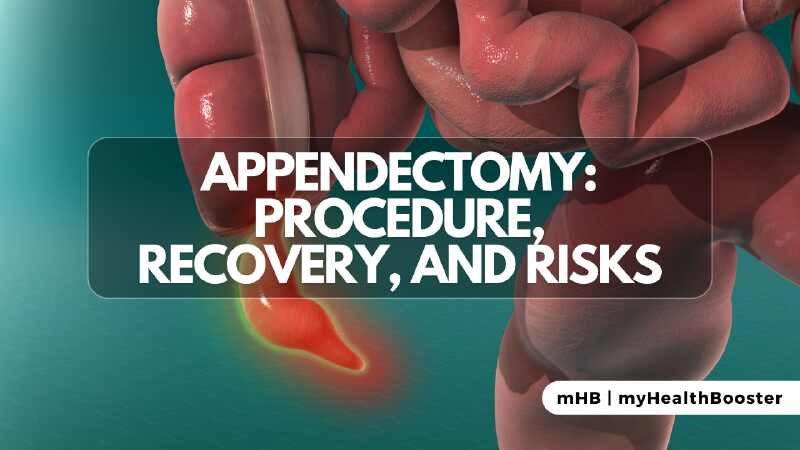Appendicitis is a medical condition characterized by inflammation of the appendix, a finger- or worm-shaped pouch extending from the cecum, the initial part of the colon. This article delves into the details of appendicitis, its symptoms, the surgical procedure known as appendectomy, and considerations regarding recovery and potential risks.
What is Appendicitis?
Appendicitis occurs when the tissues of the appendix become infected with bacteria, leading to inflammation. The appendix may also face mechanical blockage from hard stool, foreign bodies, or thick mucus, further contributing to bacterial infections. Common signs and symptoms include aching pain starting around the umbilicus and shifting to the lower right abdomen, accompanied by nausea, vomiting, loss of appetite, fever, constipation, inability to pass gas, and abdominal swelling. Deep tenderness at McBurney’s point is a typical sign, although its location may vary in young children and pregnant females.
What is an Appendectomy?
Appendectomy is the surgical removal of the appendix and is often performed as an emergency operation. In some cases, patients undergoing abdominal surgery for other reasons may opt for prophylactic appendix removal to prevent future appendicitis, a decision to be discussed with the surgeon.
Preparing for Appendectomy
As most appendectomies are emergencies, patients are advised to follow the surgeon’s instructions. Typically, patients refrain from eating, and medications may be administered to alleviate nausea and vomiting. IV antibiotics might be initiated before surgery.
Performing Appendectomy
The surgery is conducted in the operating room, involving either an open method or a laparoscopic technique. The open method requires a 2 to 3-inch incision in the lower right abdomen. At the same time, laparoscopic surgery involves several small incisions and the use of a laparoscope for visualization and removal of the appendix.
Recovery Time
Recovery time varies based on the procedure, anesthesia type, and any complications. Laparoscopic appendectomy may allow for outpatient treatment, while the open method may require an overnight stay or longer. Normal activities can resume in a few days, but full recovery may take 4 to 6 weeks, during which strenuous activities should be avoided.
Complications and Risks
Wound infection is the most common complication, with abscess formation and rare complications such as ileus, surgical injuries, gangrene of the bowel, peritonitis, and bowel obstruction. While most individuals experience no long-term consequences, some may face an increased risk of incisional hernia, stump appendicitis, or bowel obstruction.
Summary
Appendectomy is a common and effective procedure for treating appendicitis, with a well-defined process of diagnosis, surgery, and recovery. Understanding the symptoms, preparing for surgery, and being aware of potential complications contribute to a smoother recovery.
